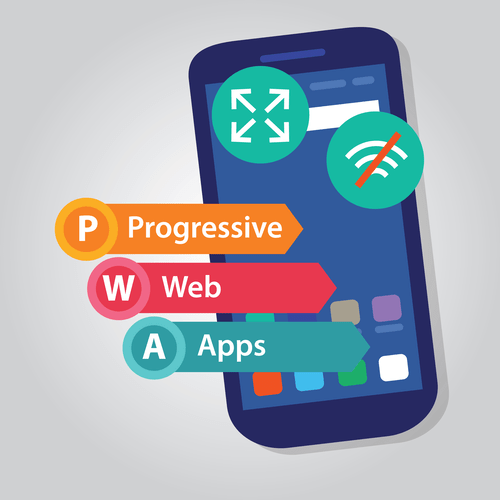With RPA in finance, data can be extracted easily for procurement management. RPA helps remove these human inconsistencies and enables you to deliver accurate results while consistently ensuring data compilation. Gartner helped Canada School of Public Service implement an RPA strategy and roll out multiple RPA processes. Learn about some of the benefits that can result from doing so, as well as potential challenges.
- In addition, they can easily be integrated with machine learning models to take on more complex tasks.
- Robotic process automation is programmed to carry out and complete finite tasks with high precision and accuracy.
- Unlike traditional automation in finance and accounting, RPA can smoothly interact with existing corporate systems (e.g. company’s ERP or CRM).
- By “minding the gaps” in your automation with the use of advanced tools such as Kofax RPA, you can nurture a better means of doing business.
- Societe Generale Bank, Brazil has been the leader in financial services, and it could become possible by automating tedious, repetitive tasks through robotic process automation.
- When data varies too much from what’s expected, or the robot grades its own confidence on the lower end of the scale, it can flag an invoice for manual user review.
He has also led commercial growth of deep tech company Hypatos that reached a 7 digit annual recurring revenue and a 9 digit valuation from 0 within 2 years. Cem’s work in Hypatos was covered by leading technology publications like TechCrunch and Business Insider. He graduated from Bogazici University as a computer engineer and holds an MBA from Columbia Business School. Both activities involve gathering data inputs, formatting the data and aggregating them in an easy-to-understand format for all stakeholders. RPA in financial planning allows businesses to provide forecasts at a faster rate and constantly have an updated view of the latest capital expenditures, investments, and financial statements.
Get tech and IT industry Updates
However, this hurdle can be easily overcome if you implement RPA in accounts payable operations with Natural Language Processing and other AI tools & ML technologies. Account Payable is a critical part of the day-to-day functions of any financial institution. However, being repetitive and time-consuming, AP is the perfect candidate for RPA automation.

Gartner studied leading shared services teams to identify common obstacles when installing finance robotics, capabilities required to keep pace with digitalization, and steps for managing finance robotics. To achieve the full benefit of finance robotics, corporate controllers need to restructure their workforce to enable automated work, free from human interference. Gartner studied how a global television company restructured its team to support finance robotics. For example, Dean worked on one project with a logistics company that used RPA to identify discrepancies between the ERP system and the company’s reporting tool. The bot evaluates the discrepancy and uses various rules to determine if the issue comes from an error with the source data or the reporting repository. Once the team member approves the change, the bot makes the change in the appropriate system.
Top 8 Use Cases for RPA in Finance and Accounting
This process is conducted at regular intervals, be it daily, weekly, monthly, quarterly, or yearly. No matter what type of reconciliation is being conducted, it requires immense attention to detail and the collection of data. Amita Jain is a writer at Capterra, covering the branding and accounting markets with a focus on emerging digital enablement tools and techniques. A public policy graduate from King’s College London, she has worked as a journalist for an education magazine.
RPA can automate this entire process, reducing manual invoice hand-offs, and leaving only the rare outlier for human inspection. Robotic process automation (RPA) is a productivity tool that allows users to configure scripts or “bots” that imitate selected tasks within a process. These processes may include manipulating data, exchanging information from system to system, triggering responses, or even executing transactions.
Efficiency
As it was mentioned above, RPA saves resources by handling repetitive tasks faster than humans. As such, they serve an integral role in informing strategic business decisions. With robotic process automation in finance, finance professionals can spend their time on high-level and analytical responsibilities, as opposed to low-level and repetitive tasks.

When considering the processes mentioned above, it is important to take an objective view and identify any areas where improvements can reduce waste. Make note of these improvements and document the steps involved, as well as the relevant parties involved. This documentation will help ensure that everyone is on board when RPA is deployed. RPA bots are scalable and can be called forward to manage high data volumes and answer a massive influx of queries in record times. RPA delivers umpteen benefits regarding finance automation that allow CFOs and other financial professionals to evolve and act following the economic sphere’s variables. To understand how RPA is used in the real world, here’s a look at nine use cases for accounting and finance.
Financial planning and forecasting
Consequently, a streamlined and cost-efficient team can focus on delivering better customer service and enhancing the overall customer experience. With the use of AI and ML in robotic process automation, FinTech companies can improve their capabilities and ensure smooth operations. Digits and figures must be accurate to the decimal places to eliminate mismatches in the reconciliation and data how to start learning natural language processing. To understand it better, an organization with other functions and sub-companies follows different structures and processes in maintaining its accounts. Bringing all of them into a standard processing format might not be possible based on the business requirements and client needs. The central team faces challenges in reconciling the accounts of all the departments/sub-companies.

Prior authorizations are a crucial driver in maintaining clean claims in the revenue cycle. According to a survey by the American Medical Association, an eye-watering 93% of physicians reported care delays due to the PA process. Automation, specifically robotic process automation (RPA), is the answer to helping providers ensure patients are authorized for care, driving down costs and improving patient and employee experience. Our performance management automation solutions help HR teams reduce manual errors and streamline the performance management process. With our AI-powered automations, you can automate performance reviews, track employee performance, and ensure accuracy with minimal effort. The critical difference is that RPA is process-driven, whereas AI is data-driven.
The evolution of RPA in finance
Operational lags in accounts payable usually occur while processing invoices. Vendor invoices are non-standardized, and need to be cross-checked with purchasing orders and approved. Intelligent automation can streamline this process end-to-end even if the incoming docs are paper-based, thanks to optical character recognition technology (OCR). Although auditing automation should be handled at a slower pace to assess effectiveness, the outcome can be extremely valuable.

RPA is able to extract data from multiple sources, format data, and create (or even send) updates to clients. For client portfolios, it’s important that they have access to their investments in real-time. Bots can play the role of an investment manager by providing portfolio details, as well as investment value.
Loan Applications Processing
Instead of a tedious manual process, you can have fast and efficient bank account opening and registering that benefits your team and customers. After the upload files have been created by a source system and automatically stored in a predefined folder, the robot starts with the automated processing. The robot either processes the upload file first or uploads it directly to the desired target system and then validates the process. This form of robotization proves to be particularly efficient when numerous, standardized upload files need to be uploaded to a target system on a regular basis (e.g., monthly).
Free Up Time and Reduce Errors
By automating EHR management, Thoughtful eliminates manual errors, reduces the risk of data breaches, and ensures compliance with regulatory requirements. Our EHR management solutions help healthcare IT teams manage patient data more effectively, freeing them to focus on higher-value tasks. Our AI-powered automation solutions enable seamless recruitment and onboarding processes, from candidate screening to onboarding new hires, freeing your team to focus on higher-value tasks. By automating HR processes, Thoughtful eliminates manual errors, reduces time-to-hire, and improves employee retention, ultimately boosting your bottom line.
Timely and precise processing results in a happier workforce, which in turn leads to a satisfied client base and a successful firm. Our AI-powered automation solutions enable seamless invoice processing, from receipt to payment, freeing your team to focus on higher-value tasks. By automating the accounts payable process, Thoughtful eliminates manual errors, reduces late payments and improves vendor relationships, ultimately boosting your bottom line. RPA is part of the greater trend of hyperautomation, enabling organizations to move from automation that mimics human actions toward automation that uses data to optimize end-to-end finance processes. RPA technology makes it possible for businesses to easily build and deploy software robots to complete repetitive tasks and processes frequently found in a typical office setup.